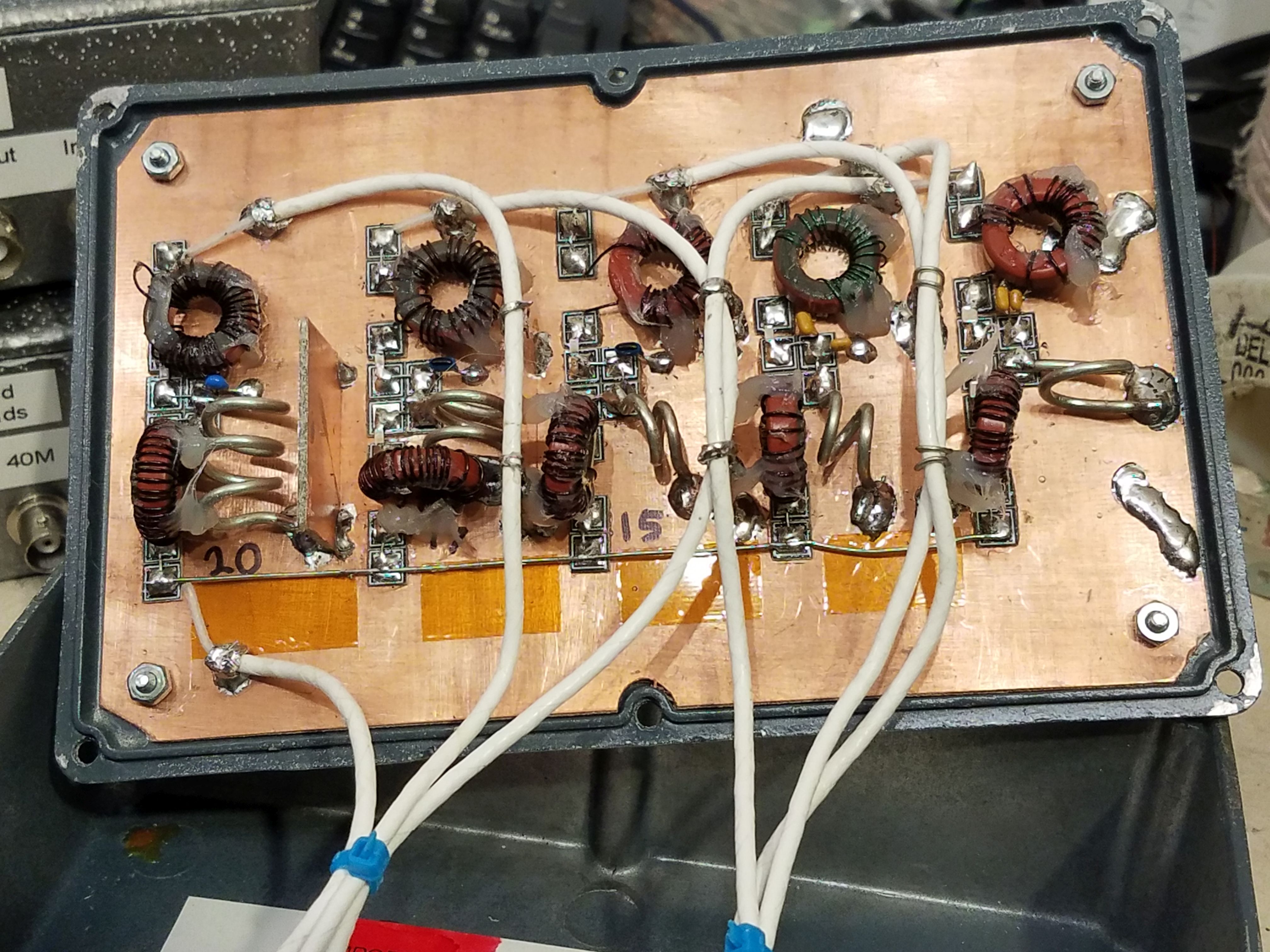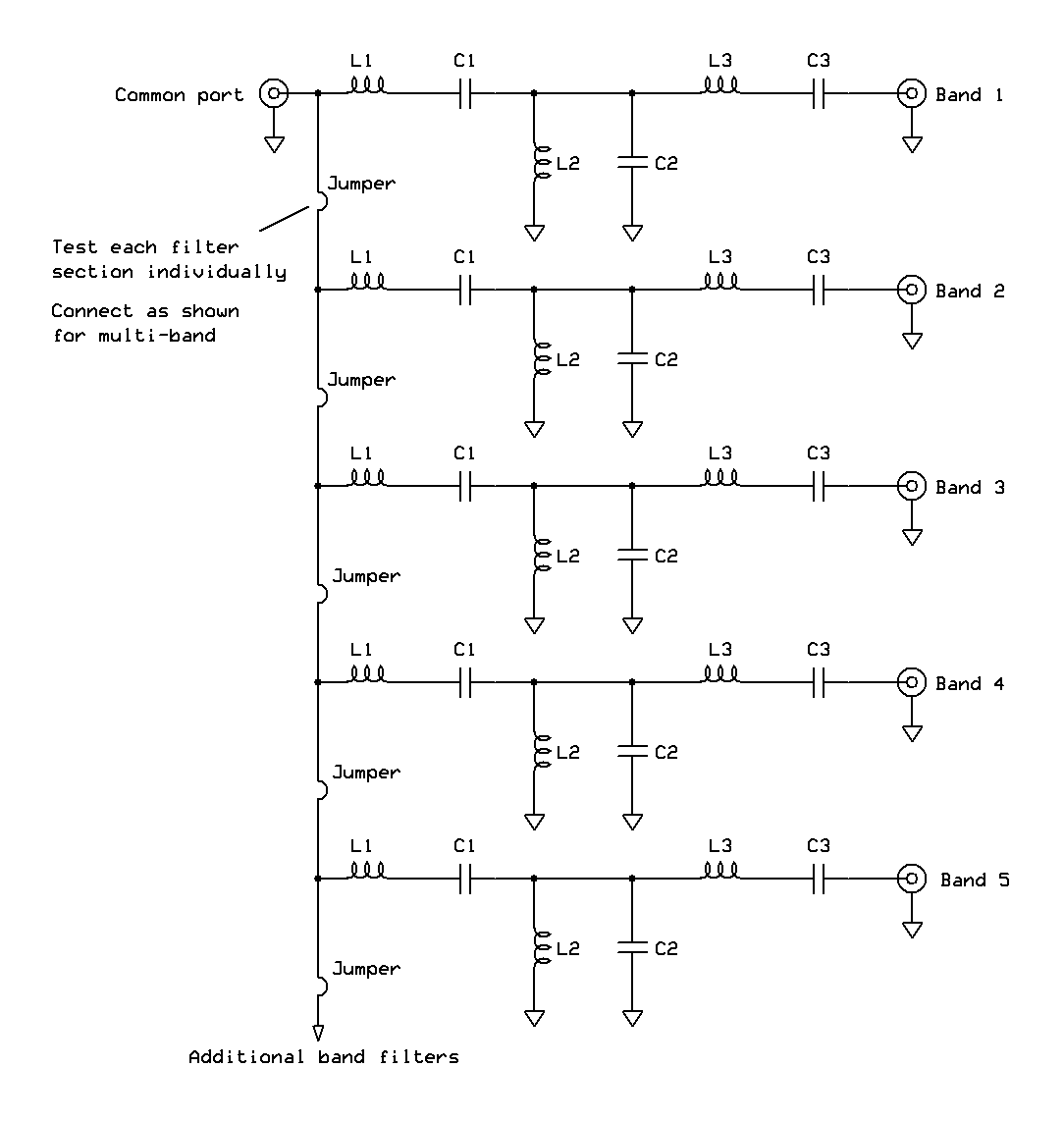| Description |
L1 |
C1 |
L2 |
C2 |
L3 |
C3 |
Approx. Calculated Insertion Loss |
| 10M (no 12M) CF=28.1MHz |
1.5uH |
20pF |
34nH |
890pF |
1.5uH |
20pF |
1.2dB |
| 15M with 17M CF=21.1 MHz |
3.0uH |
17pF |
22nH |
2396pF |
1.9uH |
24pF |
1.5dB |
| 15M (no 17M) CF=21.1 MHz |
2.2uH |
27pF |
46nH |
1327pF |
1.9uH |
31pF |
0.5dB |
| 17M (with 20M and 15M) CF=18.1MHz |
2.5uH |
37pF |
23nH |
3495pF |
4.2uH |
20pF |
1.2dB |
| 20M with 30M and 17M CF=14.1MHz |
3.0uH |
46pF |
49nH |
2744pF |
3.4uH |
40pF |
0.7dB |
| 20M (no 17M or 30M) CF=14.1MHz |
2.1uH |
63pF |
112nH |
1268pF |
2.4uH |
57pF |
0.4dB |
| 20M with 30M (no 17M) CF=14.1MHz |
2.6uH |
47pF |
77nH |
1536pF |
2.7uH |
44pF |
0.5dB |
| 30M (with 40M and 20M) CF=10.125MHz |
4.2uH |
60pF |
97nH |
2632pF |
3.5uH |
74pF |
0.5dB |
| 40M with 80M and 30M (no 60M) CF=7.1 MHz |
5.3uH |
129pF |
349nH |
1900pF |
4.9uH |
146pF |
0.45dB |
| 40M with 80M (no 30M or 60M) CF=7.1MHz |
3.2uH |
159pF |
444nH |
1121pF |
3.4uH |
149pF |
0.35dB |
| 40M with 30M and 60M CF=7.1MHz |
4.5uH |
99pF |
100nH |
4761pF |
6.0uH |
75pF |
0.9dB |
| 80M with 40M (no 60M or 160M) CF=3.55MHz |
4.4uH |
684pF |
933nH |
2974pF |
5.2uH |
539pF |
0.25dB |
| 80M with 40M and 160M (no 60M) CF=3.55MHz |
4.5uH |
432pF |
565nH |
3460pF |
6.0uH |
329pF |
0.3dB |
| 80M with 160M and 60M CF=3.55MHz |
7.2uH |
344pF |
416nH |
5599pF |
10.3uH |
222pF |
0.5dB |
| 160M with 80M CF=1.82MHz |
10.4uH |
879pF |
1.71uH |
5653pF |
11.1uH |
818pF |
0.25dB |


